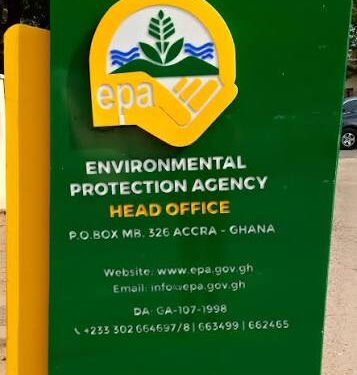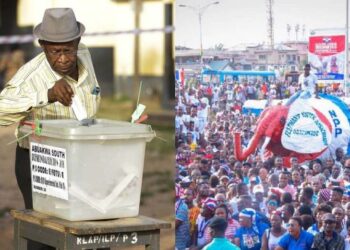The Environmental Protection Agency (EPA) is proposing a cutting-edge technological solution to reverse the devastation caused by illegal mining (galamsey), announcing that a dechemicalization solution, featuring a copper-based ‘nano liquid,’ has been laboratory-tested and proven effective in purifying heavily contaminated rivers.
Speaking on The Probe on Joy News on Sunday, October 5, Prof. Nana Ama Browne Klutse, Executive Director of the EPA, dismissed public despondency, insisting that the crisis is solvable through advanced science, provided the government secures the immediate funding for a large-scale demonstration.
“I want to tell my fellow Ghanaians that there is still hope, because we are in a technology age,” Prof. Klutse declared, shifting the focus from failed military operations to chemical innovation.
Prof. Klutse revealed that the EPA has identified and tested at least two viable technologies, including one that has been successfully deployed in other international contexts, specifically citing success in Greece.
The primary solution the EPA is currently advocating involves a “nano liquid” designed to strip pollutants from flowing river water.
“Yes, there’s a nano liquid that is copper-based that can be used. That’s just one,” she stated, stressing that the agency is looking at various options, including membrane-based purification.
She further confirmed the technology’s efficacy based on local testing: “We have tried this, which has been tested in Greece. I have seen for myself. We have done the test in the lab for the EPA and advised the government on this; we have tested it, and it works, and it’s doable.”
The urgency for a dechemicalisation strategy is underscored by the current state of Ghana’s water bodies, with up to 60% of the major rivers severely polluted.
Contamination from galamsey has introduced highly dangerous levels of arsenic and mercury—genotoxic agents that pose a direct, non-threshold cancer risk—forcing the frequent shutdown of water treatment plants serving major cities.
“To do pilots to show to Ghanaians and even the presidents that this is doable. We need 200,000 USD if I get it today, we will do the pilot for every Ghanaian to see that with the flowing river, this particular technology can be used.”







